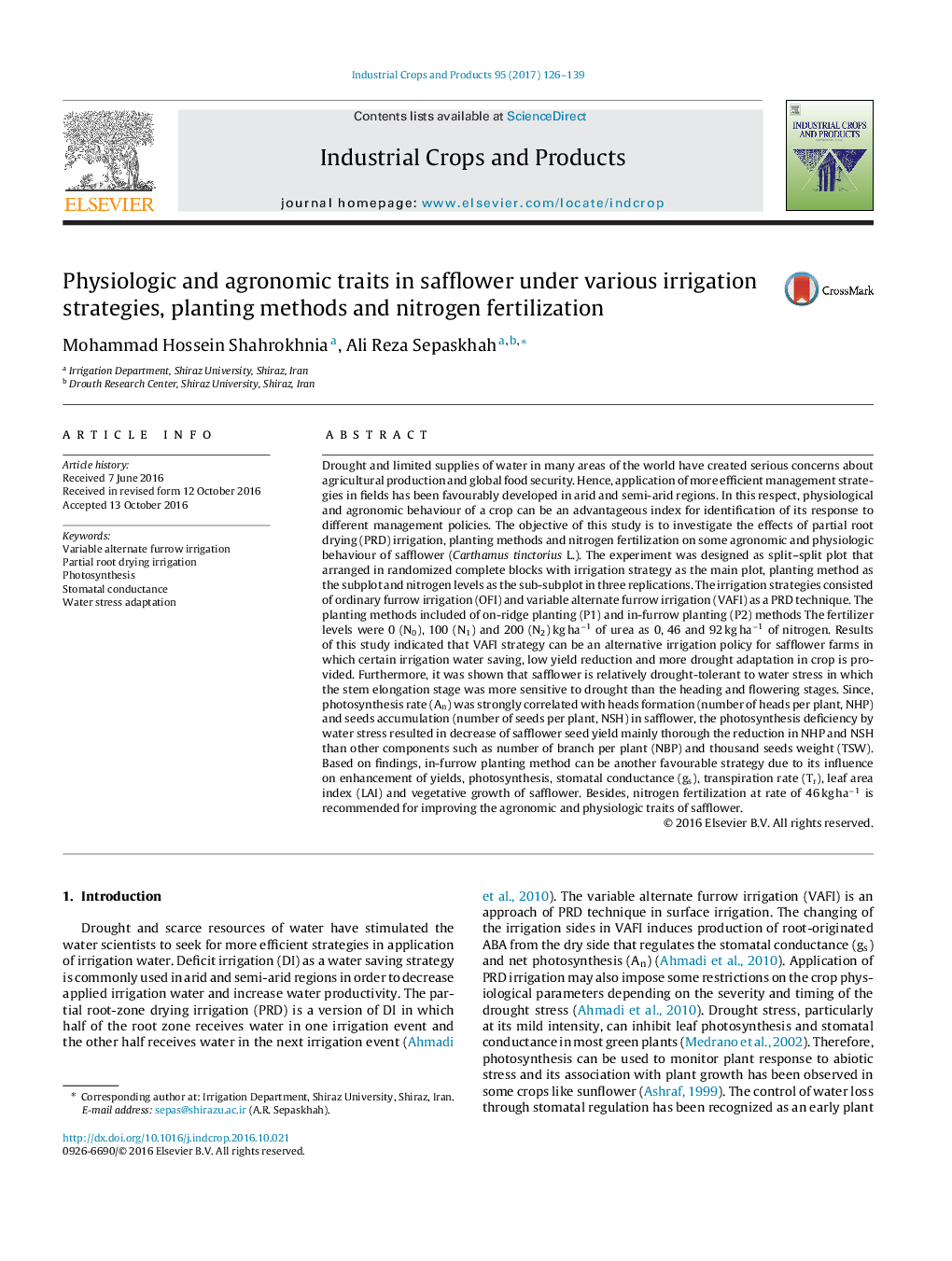| کد مقاله | کد نشریه | سال انتشار | مقاله انگلیسی | نسخه تمام متن |
|---|---|---|---|---|
| 4511933 | 1624815 | 2017 | 14 صفحه PDF | دانلود رایگان |
• Variable alternate furrow irrigation leads to saving of irrigation water, low yield reduction and more drought adaptation in safflower.
• In-furrow planting method has favourable effects on yields, photosynthesis and growth of safflower.
• Safflower is a drought-tolerant crop in which the stem elongation stage is more sensitive to drought than the heading and flowering stages.
• Seed yield reduction in safflower is mainly occurred thorough the reduction in number of heads per plant and number of seeds per head.
Drought and limited supplies of water in many areas of the world have created serious concerns about agricultural production and global food security. Hence, application of more efficient management strategies in fields has been favourably developed in arid and semi-arid regions. In this respect, physiological and agronomic behaviour of a crop can be an advantageous index for identification of its response to different management policies. The objective of this study is to investigate the effects of partial root drying (PRD) irrigation, planting methods and nitrogen fertilization on some agronomic and physiologic behaviour of safflower (Carthamus tinctorius L.). The experiment was designed as split–split plot that arranged in randomized complete blocks with irrigation strategy as the main plot, planting method as the subplot and nitrogen levels as the sub-subplot in three replications. The irrigation strategies consisted of ordinary furrow irrigation (OFI) and variable alternate furrow irrigation (VAFI) as a PRD technique. The planting methods included of on-ridge planting (P1) and in-furrow planting (P2) methods The fertilizer levels were 0 (N0), 100 (N1) and 200 (N2) kg ha−1 of urea as 0, 46 and 92 kg ha−1 of nitrogen. Results of this study indicated that VAFI strategy can be an alternative irrigation policy for safflower farms in which certain irrigation water saving, low yield reduction and more drought adaptation in crop is provided. Furthermore, it was shown that safflower is relatively drought-tolerant to water stress in which the stem elongation stage was more sensitive to drought than the heading and flowering stages. Since, photosynthesis rate (An) was strongly correlated with heads formation (number of heads per plant, NHP) and seeds accumulation (number of seeds per plant, NSH) in safflower, the photosynthesis deficiency by water stress resulted in decrease of safflower seed yield mainly thorough the reduction in NHP and NSH than other components such as number of branch per plant (NBP) and thousand seeds weight (TSW). Based on findings, in-furrow planting method can be another favourable strategy due to its influence on enhancement of yields, photosynthesis, stomatal conductance (gs), transpiration rate (Tr), leaf area index (LAI) and vegetative growth of safflower. Besides, nitrogen fertilization at rate of 46 kg ha−1 is recommended for improving the agronomic and physiologic traits of safflower.
Journal: Industrial Crops and Products - Volume 95, January 2017, Pages 126–139
